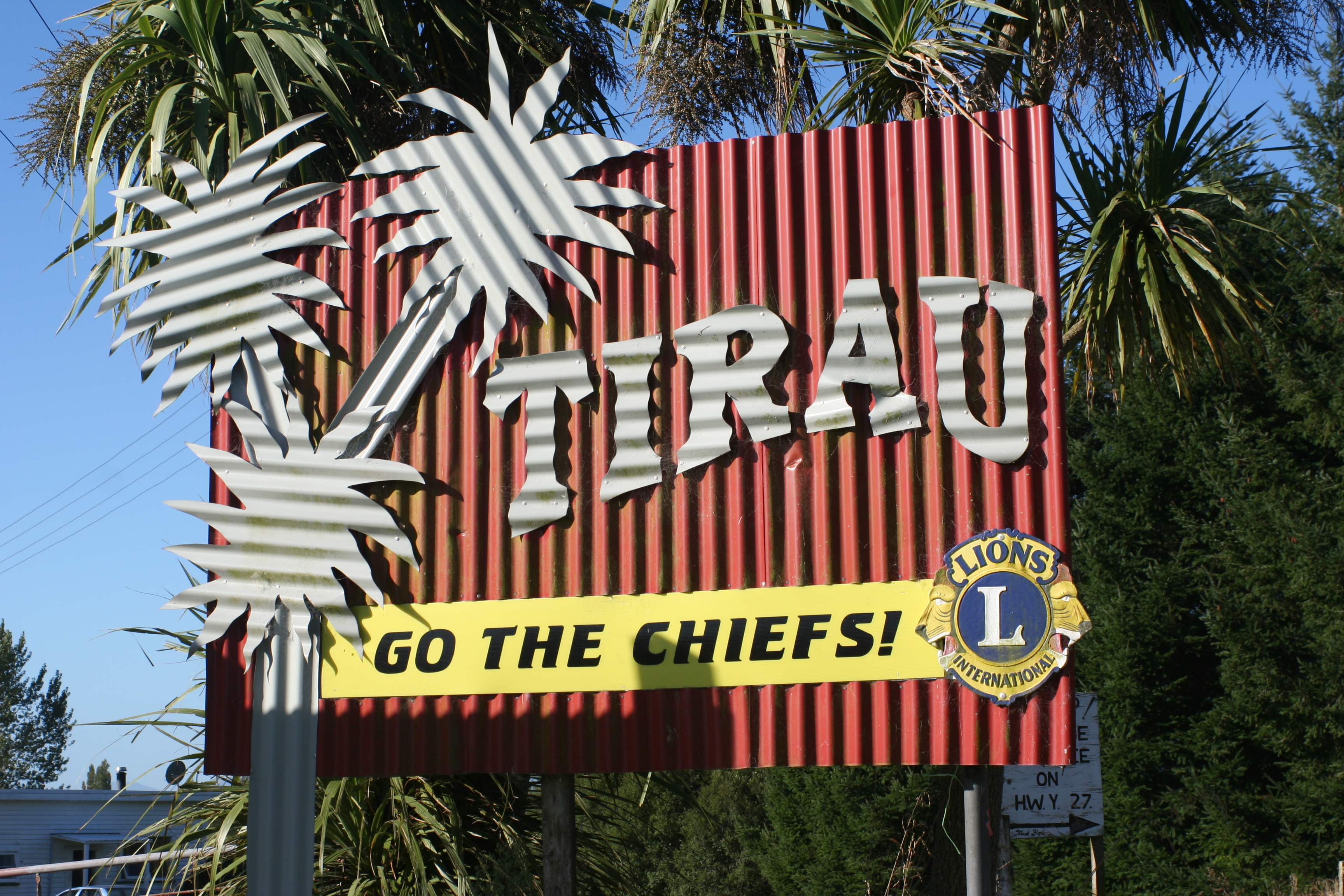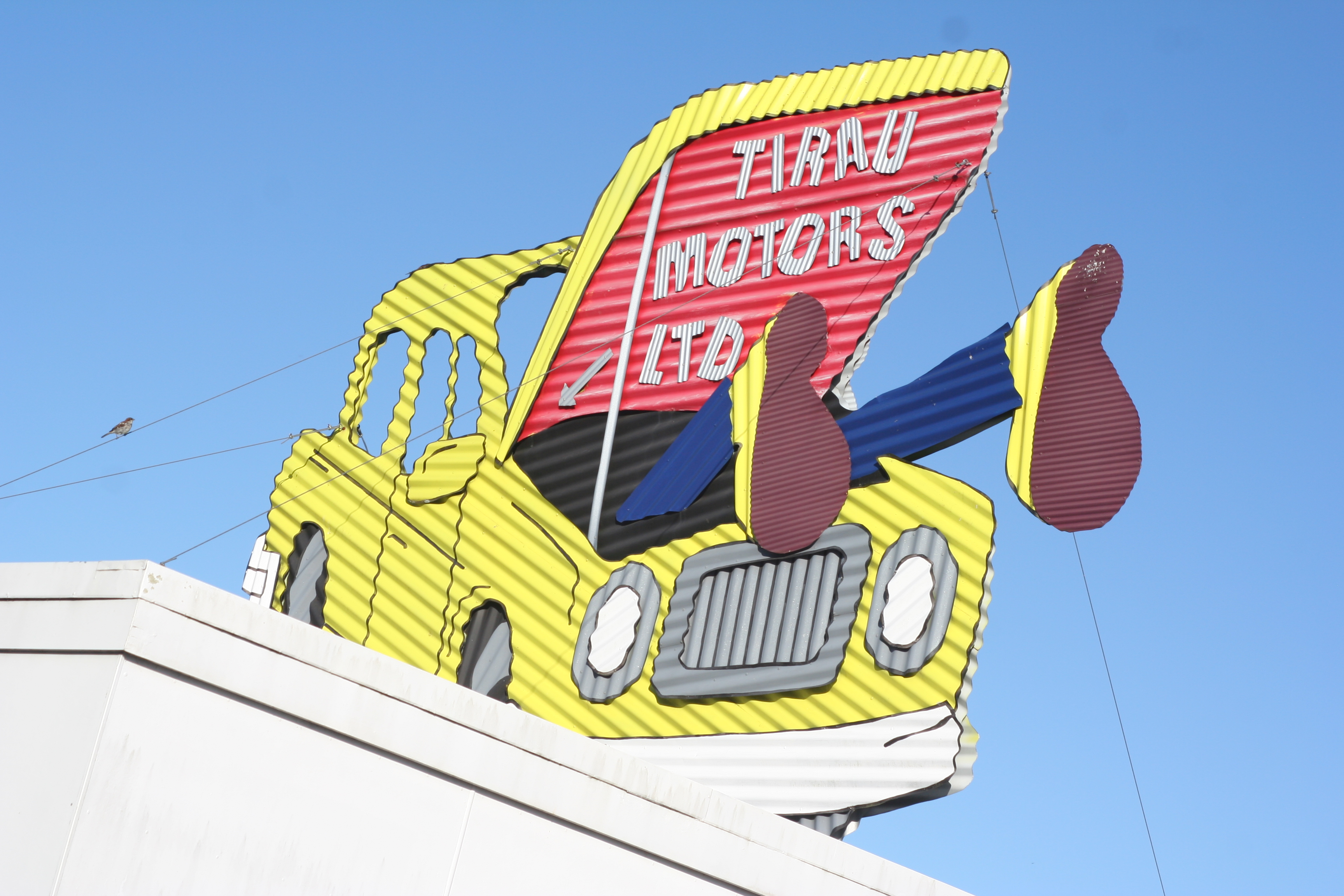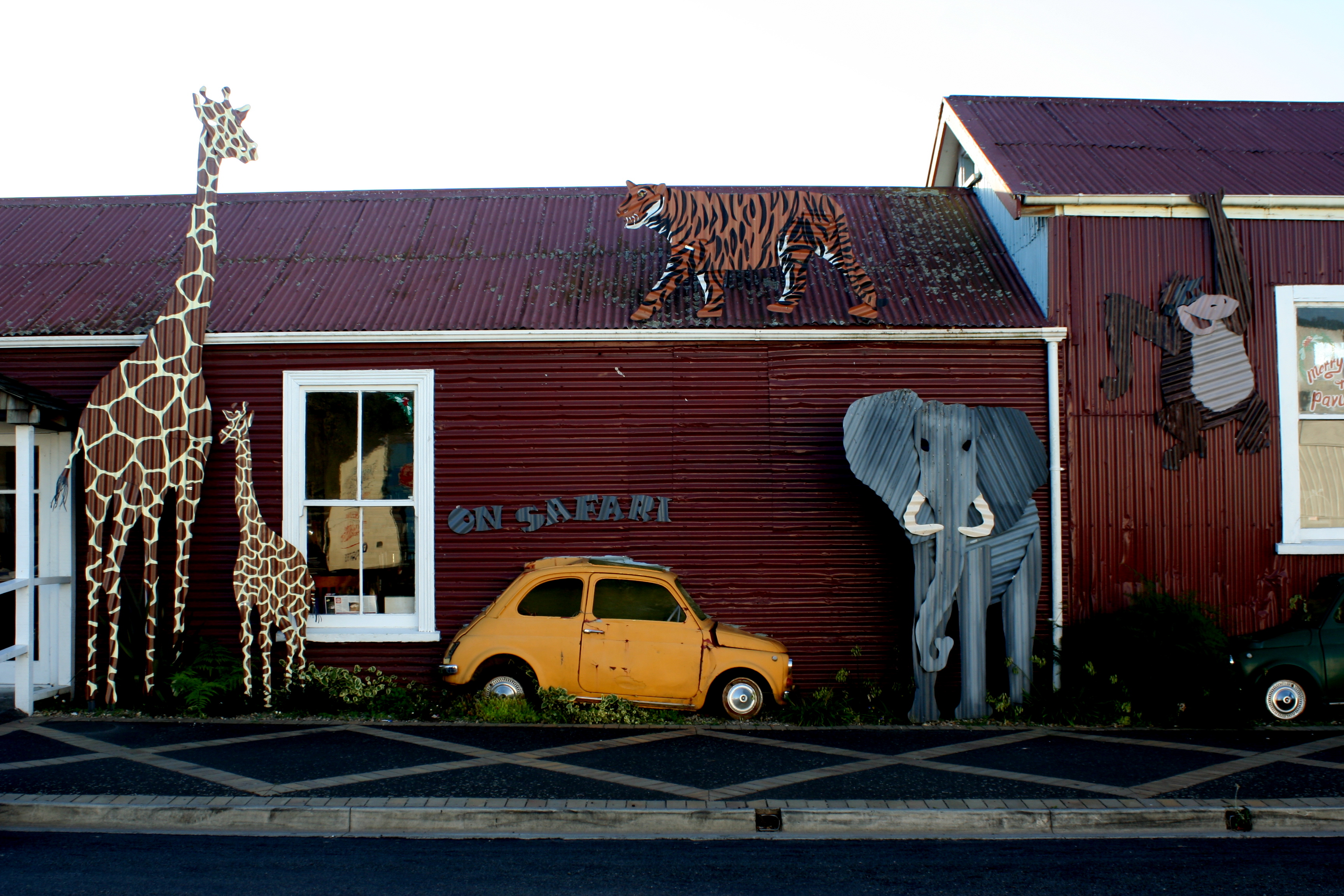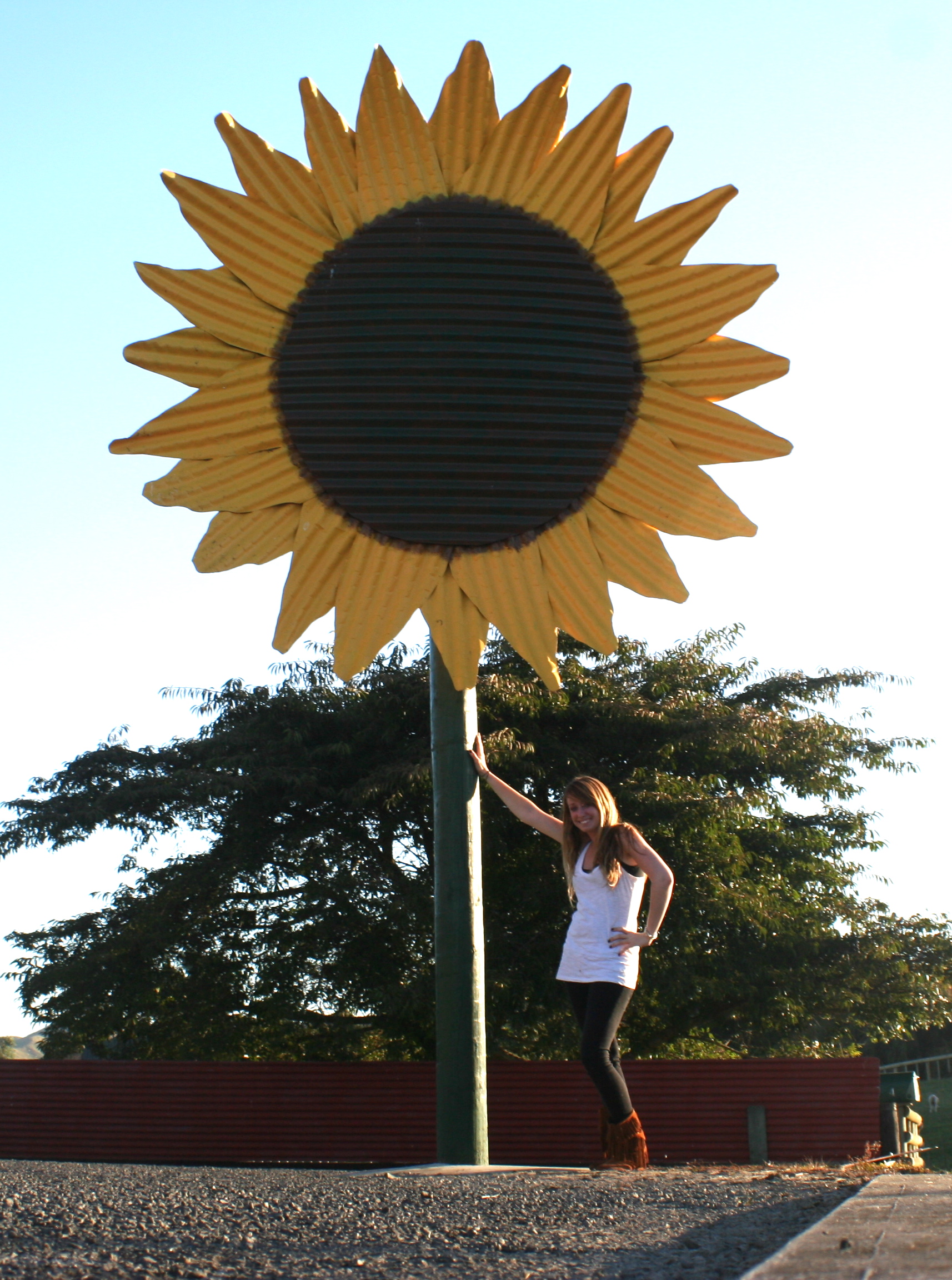On the highway out of Cambridge, I’d passed a large warehouse-like building with the words “Corrugated Creations” painted on the side like a built-in billboard. There were a few cut-outs scattered around the complex – made from corrugated iron, of course – large cartoon-ish images of a donkey, a car, and an alien eye, but I kept driving, thinking it wasn’t that important.
Think again.
My arrival in Tirau, population 750, just a few miles down the road was immediately heralded by a corrugated information center shaped like a giant dog, its oversized tongue hanging out lazily, and a wool outlet store built – not surprisingly – like a giant sheep. Even the church next door featured a giant corrugated “Good Shepherd,” staff and all. It didn’t end there.
Over the entrance to the Fine Swine Cafe a pig reclined, interestingly enough, by a fire over which a black cauldron was roasting. On top of the Merchant of Tirau, a wee mouse nibbled grapes and a slice of Swiss cheese three times his size. The main street of this little town was dotted with everything from ice cream cones, tea pots, surfers and hearts to poppy flowers, pukekos, books and a cow – indeed, there was hardly a business without its own corrugated icon and if there was, I was obviously too busy photographing to take note. Some were three-dimensional while others were flat like a sign, but either way, one thing was for sure.
In Tirau, corrugated is a way of life. I had to know why.
A closed i-Site forced me to look elsewhere and so I turned to the Clock Peddler for answers, an older man known otherwise as Roger. I was in luck. Roger, an impassioned citizen of Tirau, was excited about the changes that have taken place in the past two decades and more than willing to talk.
“About twenty years ago, the town died,” he begins in a serious tone. We’re standing in his showroom, where grandfather clocks line the walls like sentinels. “The doctor and bank moved out and only one shop was left. But all roads lead to Tirau and one man saw the potential.”
He’s speaking of a man named Henry Clothier, a local entrepreneur now credited for bringing Tirau back to life.
“He opened an antiques shop, other people opened more, and his son [who built the i-Site sheep dog] got the idea to start up the corrugated company to create signs for all the stores. It started with the sheep, then the sheep dog. It caught on, it sets the town apart. People never forget us. You go to Auckland and ask someone about us, and they’ll know who you’re talking about.”
We’ve moved outside by this point as Roger begins to close down his store for the day. The air is cool and I am struck by the earnestness in his voice.
“We went to the States last year for our son’s wedding, you know. We spent four weeks there and were amazed by the people. Everyone said ‘You’re welcome,’ and after hearing it fifty times, you actually start to believe it. We brought that back with us, how to work in retail. The trip was a year and a half ago, but we’ve only just stopped talking about it. It made that big of an impression on us.”
And here I was, the American, there to bring it all up again. But as I listened to Roger share Tirau’s story, I appreciated what I thought to be his unique perspective on the issue. It took only a little reading around, however – checking out the town’s website, the Encyclopedia of New Zealand, and even Wikipedia – to see the points of Roger’s story followed almost verbatim what they all said.
They all hailed the town’s “transformation,” citing Clothier, his antiques store, the corrugated iron, and the fact that three highways ran through Tirau as leading factors in its resurrection.
Every cause has its poster child. Weight-loss programs show past participants raising old pants and dresses like trophies at the end of a race, the waistline twice the size of what they are now. Tutoring centers hail those students whose grades went from sliding to thriving. And in the movement that champions the cause of the small town, fighting for its survival against the ever-growing domination of urban centers, the story of Tirau’s revitalization has become the stuff of legends.
So even as I write often of these towns’ insecurities, frustrated that no one seems content just being themselves, always turning to a moniker, a gimmick, or a claim to fame for significance, Tirau made me think again. Maybe the endless slogans are simply a means of survival. Survival of the fittest. In the face of threats of being folded into the larger towns of the region like a wrinkle or an afterthought, this – thinking creatively and acting strategically – is how small towns put themselves on the map. I won’t hold that against them.
In the storefront window of a Tirau clothing shop, a green t-shirt reads, “Tirau – Galvanized for the Greater Good.” The definition of “galvanize,” while far too technical for my writer’s brain to fully comprehend, goes something like this:
1. To coat iron or steel with rust-resistant zinc
2. To shock or stimulate into sudden activity
Two meanings, yet equally spot-on. And, too, was the galvanization of Tirau a two-fold affair. A simple idea between father and son to coat their town in the folds and ridges of corrugated iron had the further effect of taking Tirau from the brink of a commercial collapse to where it is today – a popular roadside attraction that’s thriving, bustling and, dare I say, charming. Some towns receive economic stimulus packages in the form of financial aid and government hand-outs.
The citizens of Tirau got theirs in the shape of cut-out, corrugated metal.




